#jurassic seas
Text

My 19th entry for Jurassic July 2023: Liopleurodon ferox, the giant 7-meter-long pliosaur that terrorized the Late Jurassic seas of what is now Western Europe 166-155 million years ago
#paleoart#paleontography#paleontology#liopleurodon#jurassic#jurassic seas#jurassicperiod#jurassic period#jurassic july#mesozoic#late jurassic#pliosaur#plesiosauria#sauropterygia#plesiosaur
68 notes
·
View notes
Photo

Sea Lily (Crinoid) fossil (Seirocrinus subangularis) - Holzmaden, Germany - Jurassic (248-146 million years ago)
4K notes
·
View notes
Text
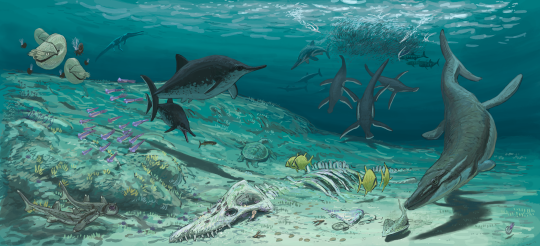
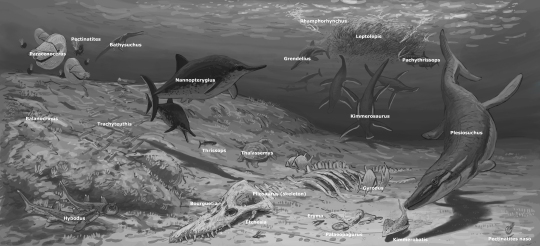
Result from the Kimmeridge Clay #paleostream!
We were only able to scratch the surface, but I think you get the idea ;)
#sciart#paleoart#paleostream#palaeoblr#jurassic#kimmeridge clay#pliosaurus#plesiosaur#plesiosuchus#nannopterygius#kimmerosaurus#sea#britain
576 notes
·
View notes
Text
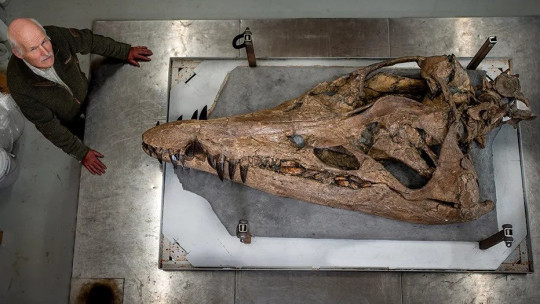
Gigantic Skull of Prehistoric Sea Monster Found on England’s ‘Jurassic Coast’
The remarkably well-preserved skull of a gigantic pliosaur, a prehistoric sea monster, has been discovered on a beach in the county of Dorset in southern England, and it could reveal secrets about these awe-inspiring creatures.
Pliosaurs dominated the oceans at a time when dinosaurs roamed the land. The unearthed fossil is about 150 million years old, almost 3 million years younger than any other pliosaur find. Researchers are analyzing the specimen to determine whether it could even be a species new to science.
Originally spotted in spring 2022, the fossil, along with its complicated excavation and ongoing scientific investigation, are now detailed in the upcoming BBC documentary “Attenborough and the Jurassic Sea Monster,” presented by legendary naturalist Sir David Attenborough, that will air February 14 on PBS.


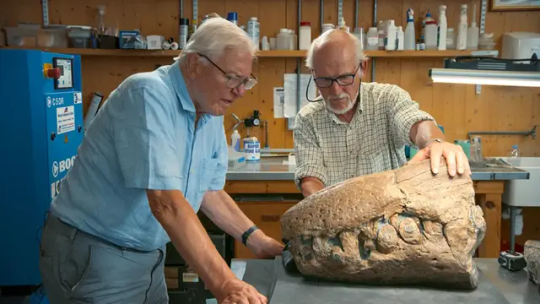
Such was the enormous size of the carnivorous marine reptile that the skull, excavated from a cliff along Dorset’s “Jurassic Coast,” is almost 2 meters (6.6 feet) long. In its fossilized form, the specimen weighs over half a metric ton. Pliosaurs species could grow to 15 meters (50 feet) in length, according to Encyclopaedia Britannica.
The fossil was buried deep in the cliff, about 11 meters (36 feet) above the ground and 15 meters (49 feet) down the cliff, local paleontologist Steve Etches, who helped uncover it, said in a video call.
Extracting it proved a perilous task, one fraught with danger as a crew raced against the clock during a window of good weather before summer storms closed in and the cliff eroded, possibly taking the rare and significant fossil with it.
Etches first learned of the fossil’s existence when his friend Philip Jacobs called him after coming across the pliosaur’s snout on the beach. Right from the start, they were “quite excited, because its jaws closed together which indicates (the fossil) is complete,” Etches said.
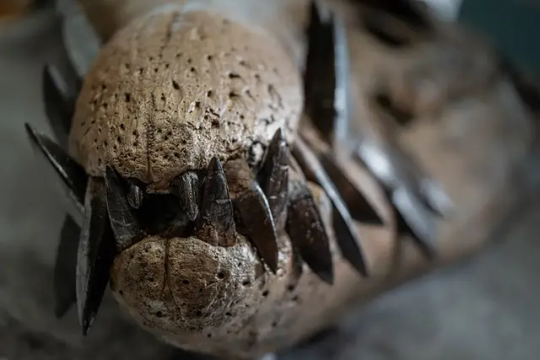

After using drones to map the cliff and identify the rest of the pliosaur’s precise position, Etches and his team embarked on a three-week operation, chiseling into the cliff while suspended in midair.
“It’s a miracle we got it out,” he said, “because we had one last day to get this thing out, which we did at 9:30 p.m.”
Etches took on the task of painstakingly restoring the skull. There was a time he found “very disillusioning” as the mud, and bone, had cracked, but “over the following days and weeks, it was a case of …, like a jigsaw, putting it all back. It took a long time but every bit of bone we got back in.”
It’s a “freak of nature” that this fossil remains in such good condition, Etches added. “It died in the right environment, there was a lot of sedimentation … so when it died and went down to the seafloor, it got buried quite quickly.”
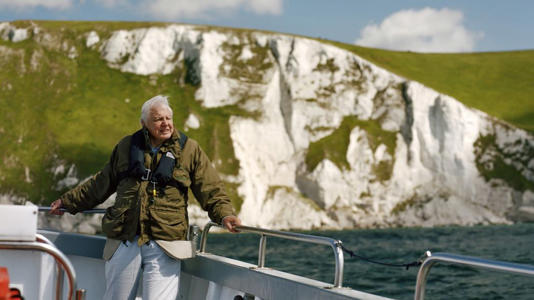
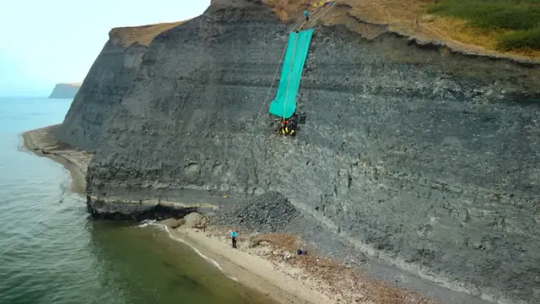

Fearsome top predator of the seas
The nearly intact fossil illuminates the characteristics that made the pliosaur a truly fearsome predator, hunting prey such as the dolphinlike ichthyosaur. The apex predator with huge razor-sharp teeth used a variety of senses, including sensory pits still visible on its skull that may have allowed it to detect changes in water pressure, according to the documentary.
The pliosaur had a bite twice as powerful as a saltwater crocodile, which has the world’s most powerful jaws today, according to Emily Rayfield, a professor of paleobiology at the University of Bristol in the United Kingdom who appeared in the documentary. The prehistoric marine predator would have been able to cut into a car, she said.
Andre Rowe, a postdoctoral research associate of paleobiology at the University of Bristol, added that “the animal would have been so massive that I think it would have been able to prey effectively on anything that was unfortunate enough to be in its space.”
By Issy Ronald.
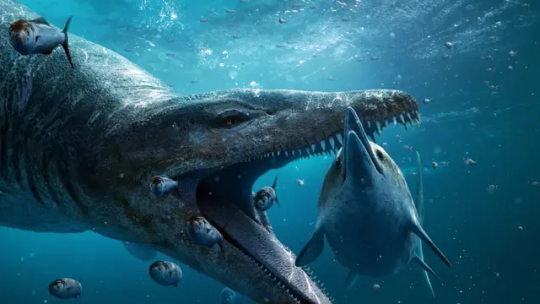
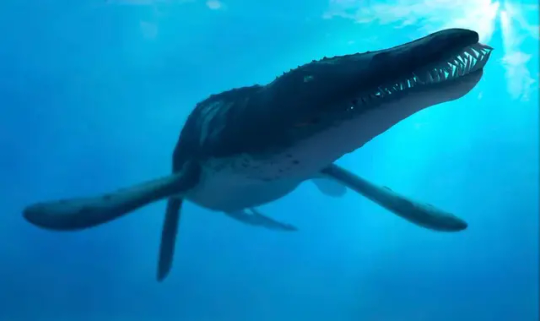
#Gigantic Skull of Prehistoric Sea Monster Found on England’s ‘Jurassic Coast’#Dorset England#pliosaur#jurassic#fossil#prehistoric#dinosaur#paleobiology#palaeontologists#archaeology#archeolgst#history#history news#ancient history#Sir David Attenborough#nature#naturalist
590 notes
·
View notes
Photo
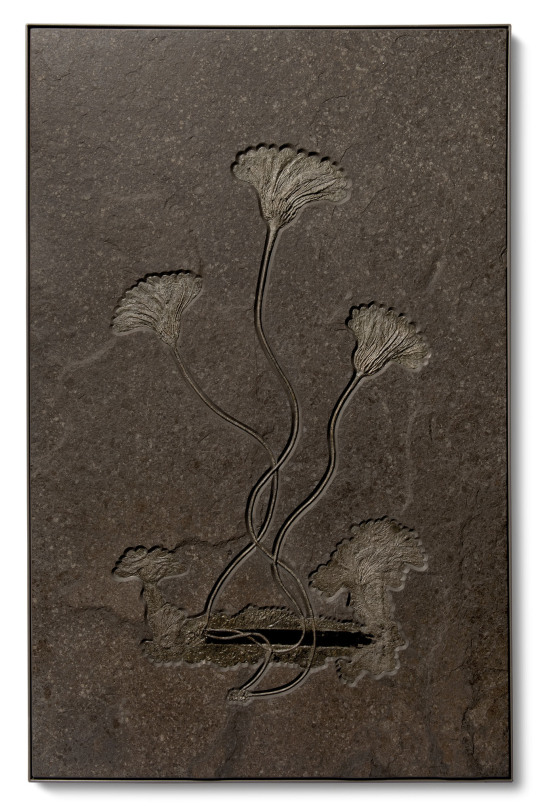
Fossil Sea Lily Plaque, From the Jurassic (248 - 146 million years ago),
Holzmaden, Germany,
The multiple specimens of Seirocrinus subangularis displaying fine detail and elegantly positioned in the slate matrix, displaying the fossilised flotsam wood to which they would have been anchored in life, the crown of the largest specimen measuring 11 inches, the matrix cut square to form large plaque, in metal frame.
66 x 42 x 21⁄2in. (167.5 x 106.5 x 6.5cm.)
Courtesy: Christie’s
#art#fossil#sea lily#lilie#germany#jurassic#holzmaden#seirocrinus subangularis#matrix#history#christie's
813 notes
·
View notes
Text
PREGNANT WOMAN NEEDS URGENT EVACUATION FROM GAZA
Laila Ezzat al Shana is a 20 year old from Gaza who needs to evacuate her family from Gaza. Her husband needs immediate surgery for injuries in both feet. Her son Ismail is 2 years old, and all Laila wants for him is to live a safe and happy life! She just wants to raise her upcoming baby in peace and security like any other mother! She has only received 61€/75,000€ needed! Please, please help me share her message!
#free palestine#palestine#gaza#free gaza#from the river to the sea palestine will be free#jerusalem#gaza genocide#israel#gaza strip#current events#tel aviv#iran news#iran#egypt#jordan#game changer#dropout#dropout tv#the watcher#queer#palestine news#news on gaza#save palestine#yemen#bethlehem#gaza under attack#jurassic park#ceramics#lgbt#tesla
115 notes
·
View notes
Text
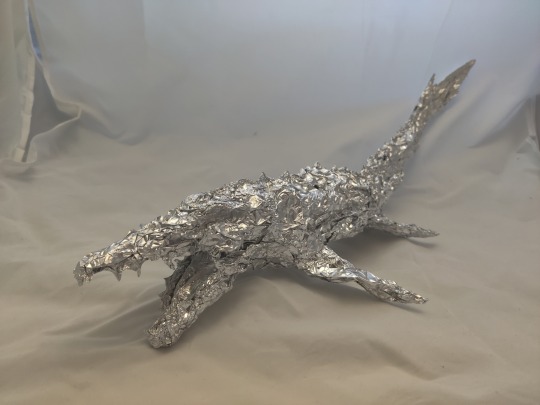
Mosasaurus from Jurassic World - Aluminum Foil Sculpture
#mosasaurus#dinosaur#dinosaurs#jurassic world#jurassic world fanart#jurassic world art#jurassic world mosasaurus#sea monster#sea creature#foil#sculpture#fanart
297 notes
·
View notes
Text
x
#fossils#fossil#crinoid#star#stars#christmas#ancient#curiosity#nature#photography#natural#history#naturalhistory#jurassic#coast#jurassiccoast#beach#stones#rocks#sea#sand#maryanning#dinosaur#palaeontology#geology#dorset#charmouth#charmouthbeach#lymeregis#fascinatingfossils
84 notes
·
View notes
Text
I went on a tour at someplace like Jurassic Park and it was a completely normal occurrence for people to get lost at sea or eaten by dinosaurs during the tour.
#dream#text#June 17th 2023#jurassic park#tour#sea#dinosaur#horror#death#death tw#nightmare#queueueueueueueueueueueueueue
239 notes
·
View notes
Text
Elasmosaurus | Dinosaurs | Counted Cross Stitch Pattern | Instant PDF Download
#cross stitch#cross stitch pattern#counted cross stitch#elasmosaurus#dinosaur#dinosaurs#triassic#jurassic#cretaceous#paleo#paleo art#paleontology#sea animals#sea life#sea creatues#loch ness monster#nessie#cryptid
73 notes
·
View notes
Text
There should be an Oscar category called the Samuel L. Jackson Award for Acting in a Terrible Movie.
I thought about it during Secret Invasion about how he elevates material (other good actors in that show did too, like Olivia Coleman). But his monologue in Deep Blue Sea is so randomly great, and the movie is so dumb. I think it must be harder to be good in a bad thing than be good in a good thing. So he's actually better than a lot of people who have won Oscars in competition. (Still randomly mad his lifetime Oscar wasn't presented on TV.)
Imagine someone else saying the line "Hold onto your butts" in Jurassic Park.
88 notes
·
View notes
Text

My 8th entry for Jurassic July 2023: Plesiosaurus dolichodeirus, the iconic type genus of the plesiosauria which lived 199-175 million years ago in the Early Jurassic seas of what is now England.
#paleoart#plesiosaur#plesiosaurus dolichodeirus#plesiosauria#plesiosaurs#jurassic july#jurassic seas#paleontology#paleontography
25 notes
·
View notes
Text
Joe Byrne never felt sympathy for his FBI counterpart. But he just might make an exception just this once. It couldn’t be easy investigating a so-illegal-that-Joe-doubted-it-was-written-law dinosaur auction while said dinosaurs were still roaming the northwestern countryside. That didn’t change his opinion on being asked for “help” when any attempts to get any himself were regularly rebuffed in the name of bureaucracy.
Luckily, Joe had a lead. There was no way Alex Rider, diagnosed adrenaline addict, wouldn’t try his best to be in the room where that much chaos was bottled.
#alex rider#alex rider fanfiction#yassen gregorovich#devil and the deep blue sea#Jurassic Measures Sequel#A fossil and a Pterrorist
42 notes
·
View notes
Text

Abyssosaurus, a weird plesiosaur from northern Russia. A potential deep sea hunter, with very dense bones, enlarged eyes and bizarre paddle movements. Also, it's eyes appear to be wider than it's jaws making it possible to look below it's own skull.
2K notes
·
View notes
Text


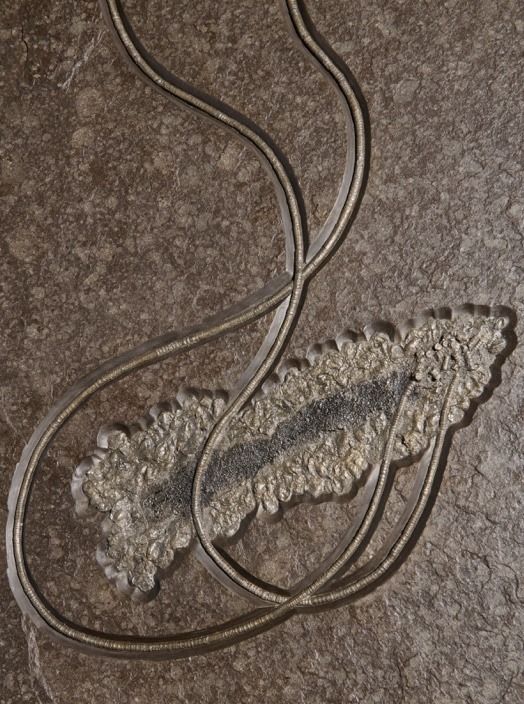
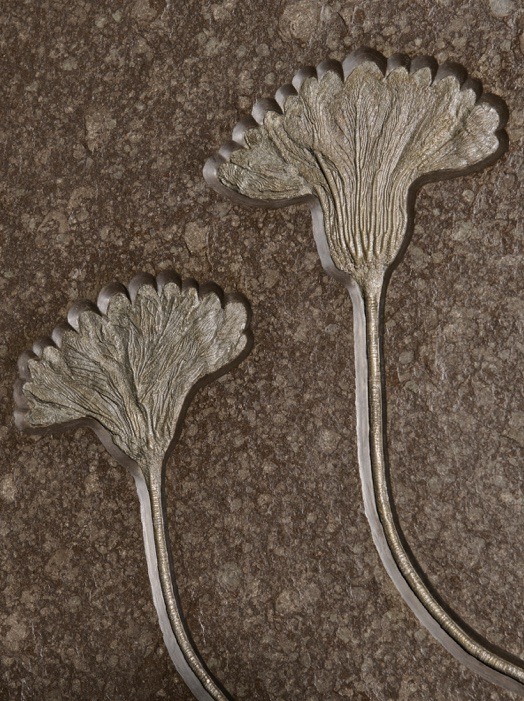
A FOSSIL SEA LILY PLAQUE
Holzmaden, Germany
From the Jurassic (circa 208 to 146 million years ago), this pair of pyritised Seirocrinus subangularis with largest crown measuring 10-inches in width, in slate matrix, the edges cut straight.
607⁄8 x 331⁄4 x 11⁄4in. (154.6 x 84.5 x 3.2cm.).
Crinoids, also known as sea lilies or feather stars, are examples of living fossils. They belong to the phylum Echinodermata, and are distantly related to the starfish, brittle star and sea urchin. Filter feeders, with crowns of pinnules that trap microscopic particles on which to feed, they sway back and forth on the ocean floor. Their fossil remains are found all over the world, but most beautiful and best preserved examples are those from the Posidonia shale beds of Holzmaden in southern Germany. The strong dark colour of the shale matrix serves as a beautiful background to the delicate serpentine neck of the fossil, highlighted by the subtle shimmer of pyritisation. The matrix itself has been prepared, to better the contrast with the superb three-dimensional detail of the fossil itself which stands out in high relief.
#A FOSSIL SEA LILY PLAQUE#Holzmaden Germany#jurassic period#pyritised Seirocrinus subangularis#sea lilies#feather stars#fossils#archeology#archeolgst#history#history news#ancient artifacts#nature
76 notes
·
View notes
Photo
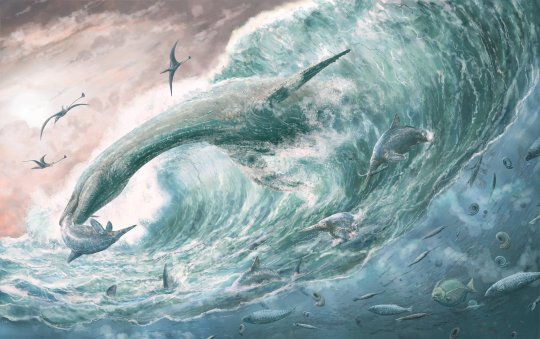
art by Mark Witton
232 notes
·
View notes